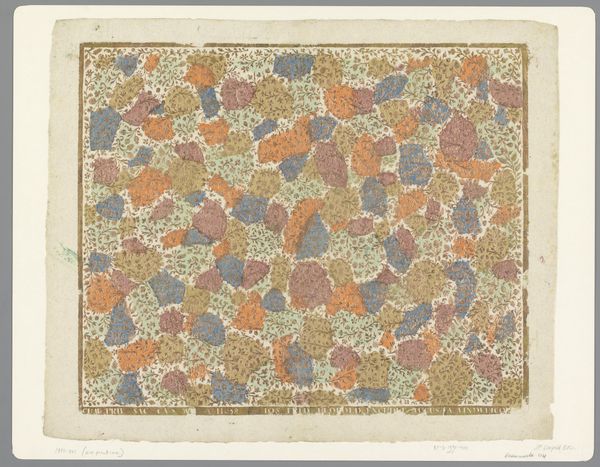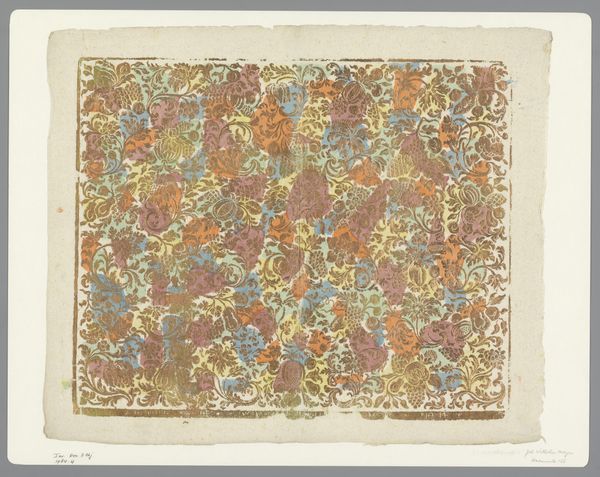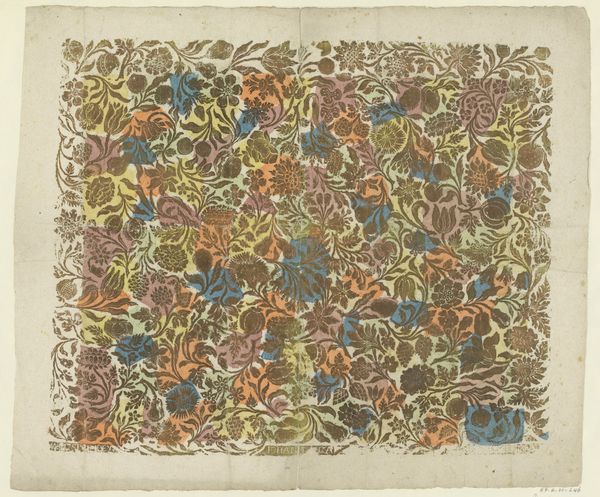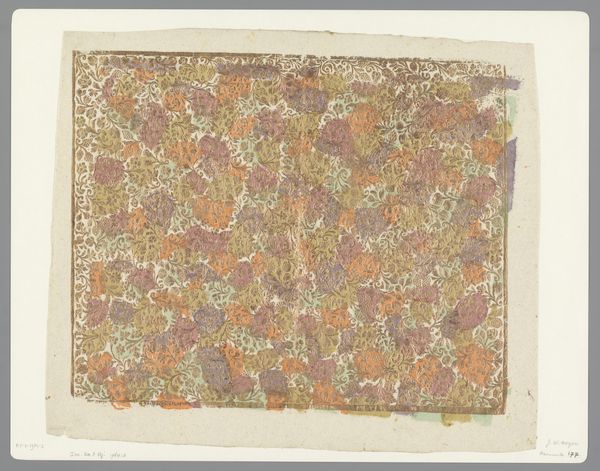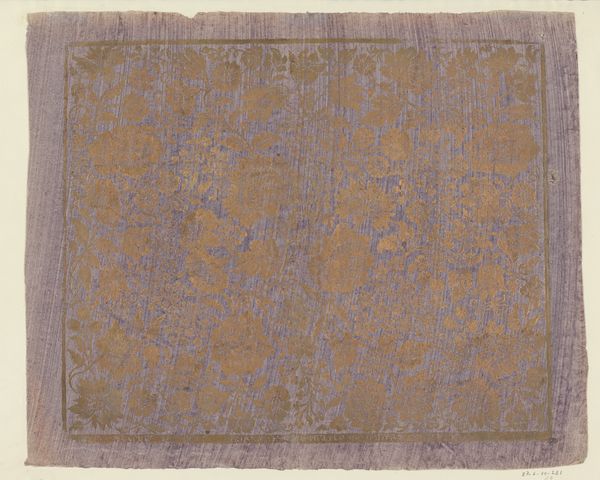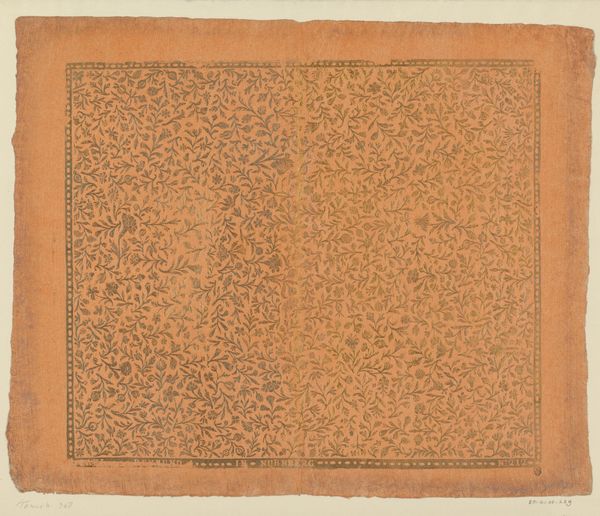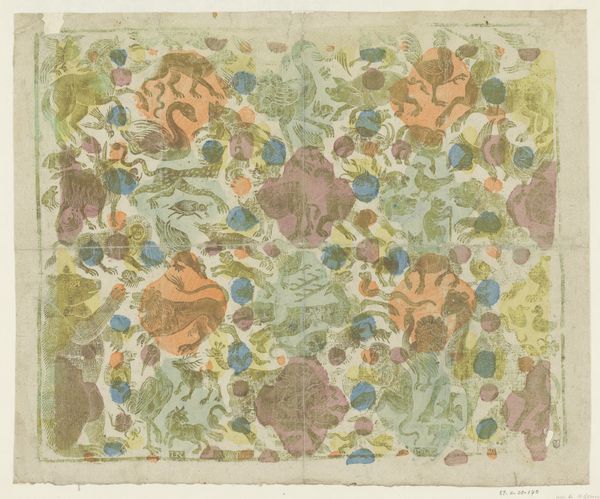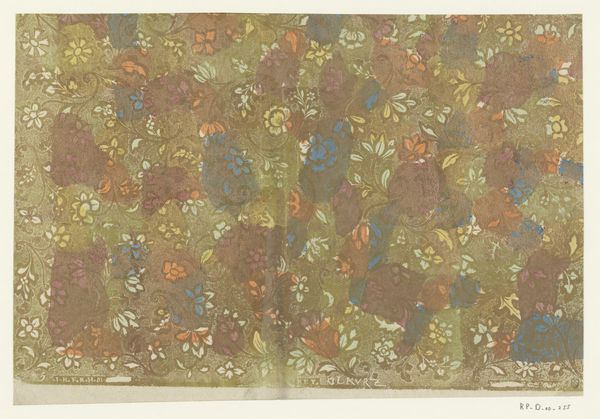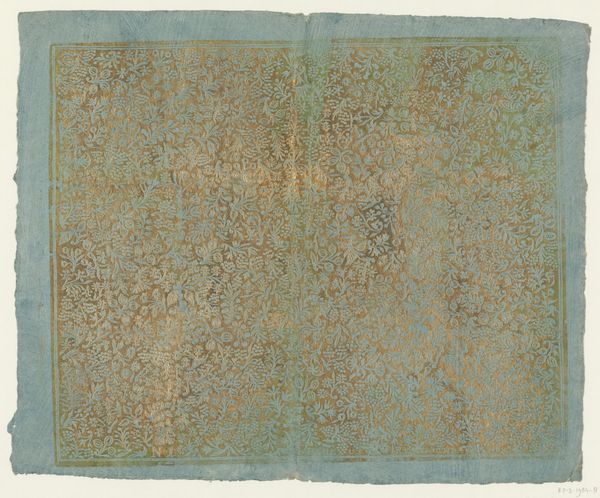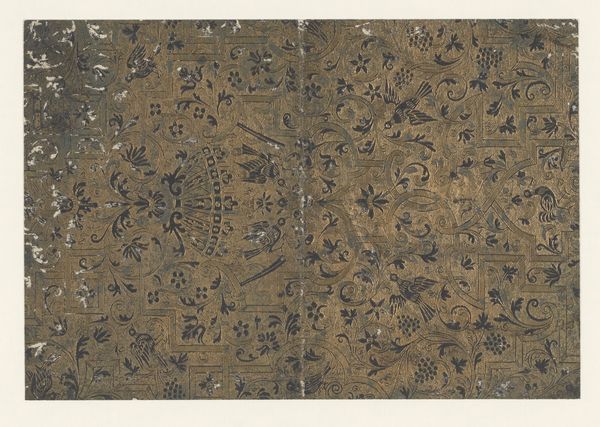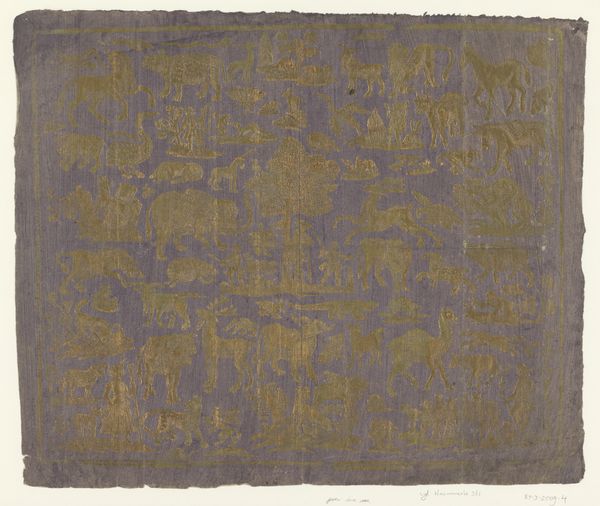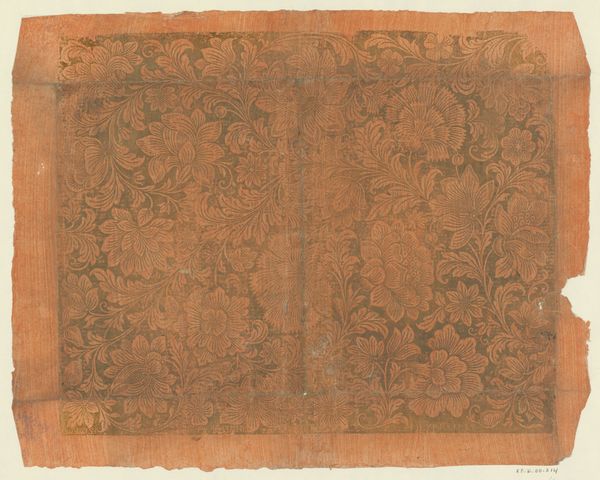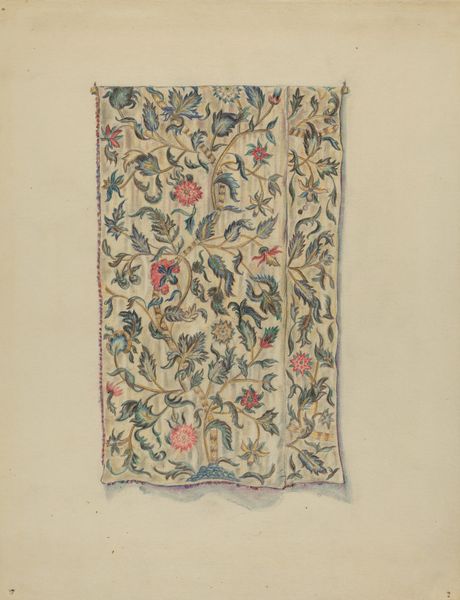
painting, watercolor
#
water colours
#
baroque
#
painting
#
watercolor
#
watercolor
Dimensions: height 310 mm, width 370 mm
Copyright: Rijks Museum: Open Domain
Editor: We're looking at "Blad met kleine ranken met bloemen en vruchten," a watercolor painting by Joseph Friedrich Leopold, created sometime between 1669 and 1727. It's currently held at the Rijksmuseum. The distribution of colour makes it seem somewhat like an abstracted quilt. What initially strikes you about this piece? Curator: The overall effect is one of controlled exuberance. Note the repetition of forms, and how these build an interwoven structure. Do you see how the gold veining accentuates and contains each color field? The texture created by the layered watercolor is very tactile. Editor: I do. It's interesting how you focus on the arrangement and the application of the material itself. Does that tell you anything? Curator: It encourages consideration of what art IS beyond what it represents. This period utilized symbolism differently; here, what meaning do the chosen floral motifs convey in contrast to pure shapes? Is the emphasis more on surface embellishment, or some deeper narrative encoded within? Consider that decorative and “fine” art weren't so distinguished then as now. Editor: So, the visual structure challenges me to consider the conventions of the era. The work is intricate, and so detailed. What have you noticed after looking closer? Curator: Precisely! Examine how Leopold balances varying hues of blue, purple, and pink, avoiding a visually static composition. The framing vine motif serves as a formal device, further compartmentalizing the surface and thus creating more points of tension. Editor: I see, almost trapping the flowers. Thank you! It has opened my eyes. I will try and look at art like this going forward. Curator: My pleasure, recognizing the aesthetic framework invites more fruitful contemplation of art.
Comments
No comments
Be the first to comment and join the conversation on the ultimate creative platform.
